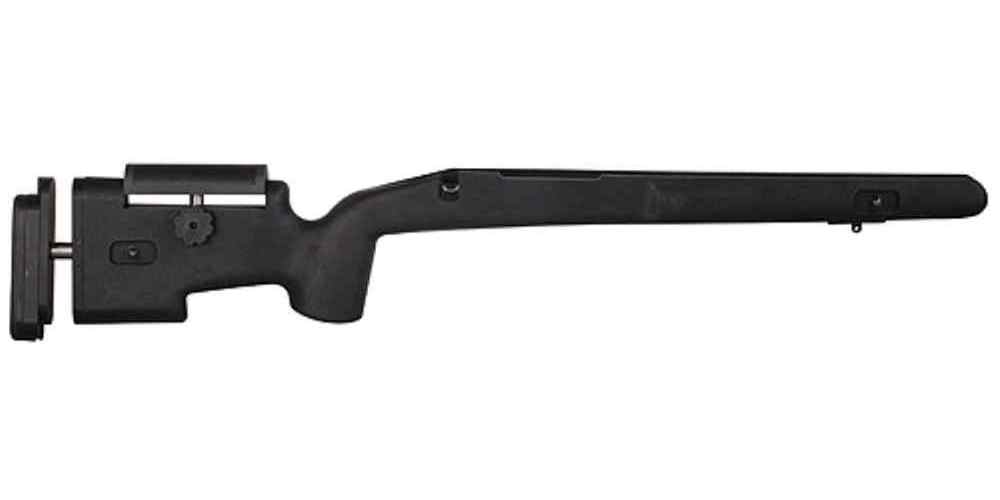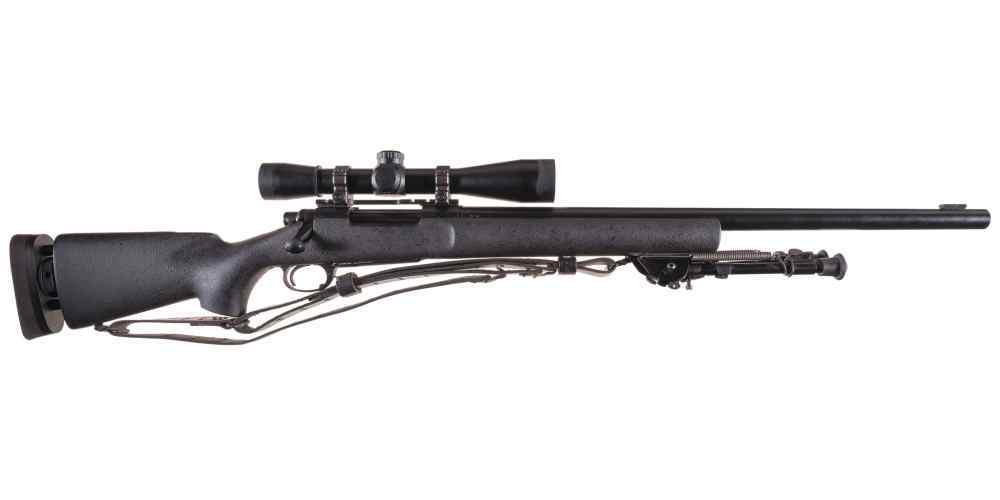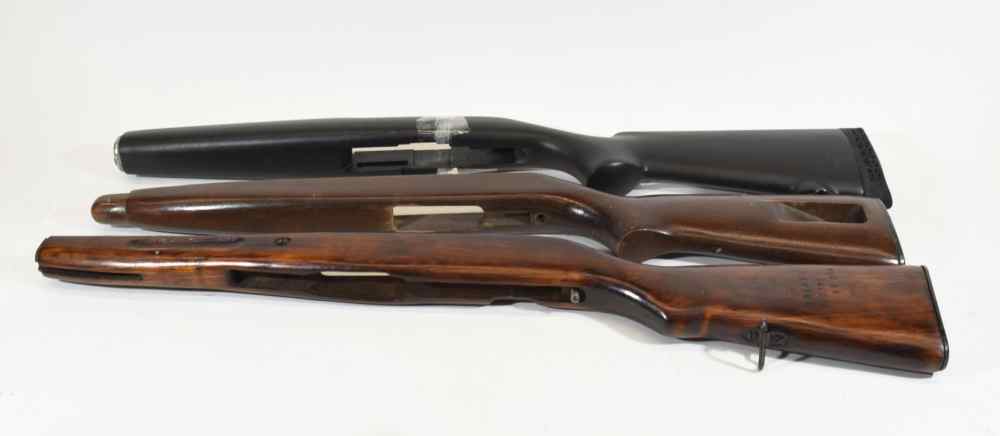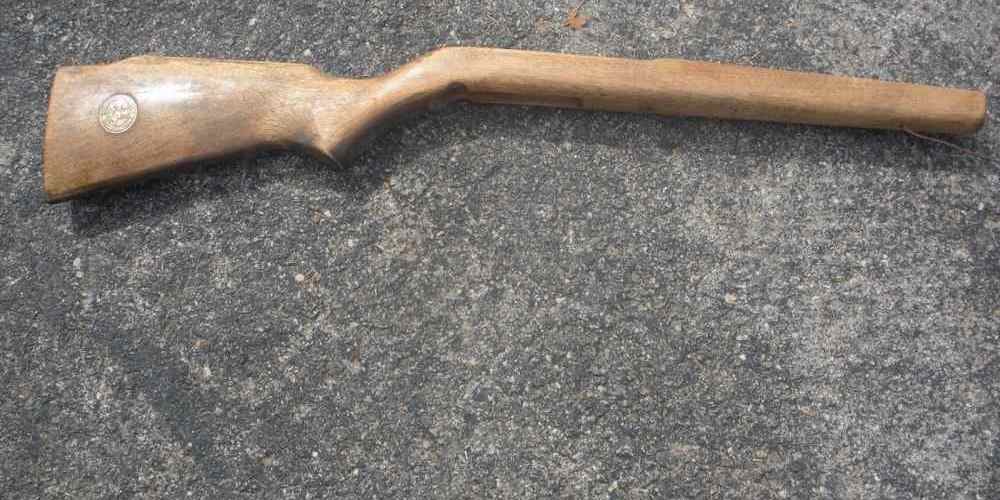“Enhance your aim with precision-engineered rifle stocks designed for optimal shooting biomechanics.”
Benefits of Upgrading Your Rifle Stock
When it comes to shooting accuracy and comfort, the rifle stock plays a crucial role in ensuring a successful shot. Upgrading your rifle stock can provide numerous benefits that can enhance your shooting experience. From improved ergonomics to better recoil management, a high-quality rifle stock can make a significant difference in your shooting performance.
One of the key benefits of upgrading your rifle stock is improved ergonomics. A well-designed stock can provide a more comfortable and natural shooting position, reducing strain on your body and allowing you to maintain better control over your rifle. This can lead to more consistent and accurate shots, as you will be able to focus on your target without being distracted by discomfort or fatigue.
In addition to improved ergonomics, a high-quality rifle stock can also help with recoil management. Recoil can be a significant factor in shooting accuracy, as excessive recoil can cause your rifle to jump off target, leading to missed shots. A good rifle stock can help absorb and distribute recoil energy more effectively, reducing the impact on your shoulder and allowing you to stay on target for follow-up shots.
Another benefit of upgrading your rifle stock is increased stability. A rigid and stable stock can help minimize movement and vibrations, providing a solid platform for your rifle to rest on. This can result in improved accuracy, as your rifle will be less prone to shifting or wobbling during the shooting process. A stable stock can also help with consistency, as you will be able to replicate your shooting position more accurately from shot to shot.
Furthermore, upgrading your rifle stock can also enhance the overall aesthetics of your rifle. Many aftermarket stocks are available in a variety of colors and finishes, allowing you to customize the look of your rifle to suit your personal preferences. Whether you prefer a classic wood finish or a modern synthetic material, there are plenty of options available to help you achieve the look you desire.
In conclusion, upgrading your rifle stock can provide a wide range of benefits that can improve your shooting experience. From improved ergonomics and recoil management to increased stability and enhanced aesthetics, a high-quality rifle stock can make a significant difference in your shooting performance. Whether you are a seasoned shooter looking to take your skills to the next level or a beginner looking to improve your accuracy, upgrading your rifle stock is a worthwhile investment that can pay off in the long run. So why wait? Upgrade your rifle stock today and start enjoying the benefits of better shooting biomechanics.
Understanding the Importance of Proper Shooting Biomechanics
When it comes to shooting accurately, having proper shooting biomechanics is essential. One key component of shooting biomechanics is the rifle stock. The rifle stock is the part of the gun that the shooter holds against their shoulder to stabilize the weapon and aim accurately. It plays a crucial role in ensuring that the shooter can maintain a steady and consistent shooting position.
The design of the rifle stock can greatly impact the shooter’s ability to shoot accurately. A poorly designed stock can lead to discomfort, fatigue, and ultimately, decreased accuracy. On the other hand, a well-designed stock can enhance the shooter’s comfort, stability, and overall shooting performance.
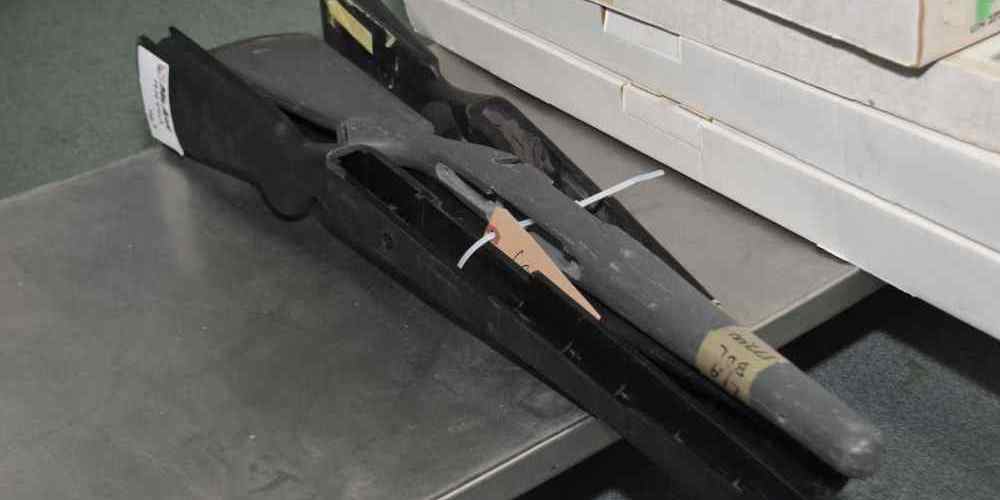
One important factor to consider when choosing a rifle stock is the length of pull. The length of pull refers to the distance from the trigger to the butt of the stock. A stock with the correct length of pull will allow the shooter to maintain a proper shooting position without straining or stretching. This is important for ensuring that the shooter can comfortably and consistently aim and shoot accurately.
Another important factor to consider is the shape and contour of the stock. A stock that fits the shooter’s body shape and size will provide better support and stability, leading to improved shooting accuracy. Additionally, the material of the stock can also impact the shooter’s comfort and performance. Stocks made from materials such as wood, synthetic, or composite materials each have their own advantages and disadvantages in terms of weight, durability, and recoil absorption.
Proper shooting biomechanics also involve the shooter’s stance, grip, and trigger control. The shooter’s stance should be stable and balanced, with the feet shoulder-width apart and the body facing the target. The grip should be firm but not too tight, with the trigger finger placed correctly on the trigger. Proper trigger control is essential for ensuring a smooth and consistent trigger pull, which is crucial for accurate shooting.
In addition to the rifle stock and shooting stance, the shooter’s breathing and sight alignment also play a crucial role in shooting accuracy. Proper breathing techniques, such as taking a deep breath and exhaling slowly before taking the shot, can help the shooter maintain focus and control. Sight alignment refers to the proper alignment of the front and rear sights with the target. This is essential for ensuring that the shooter can aim accurately and consistently hit the target.
Overall, understanding and implementing proper shooting biomechanics is essential for achieving accurate and consistent shooting performance. By paying attention to factors such as rifle stock design, shooting stance, grip, trigger control, breathing, and sight alignment, shooters can improve their accuracy and overall shooting skills. Whether you are a beginner or an experienced shooter, taking the time to learn and practice proper shooting biomechanics can make a significant difference in your shooting performance. So, next time you hit the range, remember to focus on your shooting biomechanics to improve your accuracy and precision.
How to Choose the Right Rifle Stock for Your Shooting Style
When it comes to shooting accurately, having the right rifle stock can make all the difference. Rifle stocks are not just a cosmetic accessory; they play a crucial role in the overall performance of your firearm. Understanding how rifle stocks affect shooting biomechanics can help you choose the right one for your shooting style.
One of the key factors to consider when selecting a rifle stock is the length of pull. The length of pull refers to the distance from the trigger to the butt of the stock. A stock with the correct length of pull will allow you to maintain a comfortable shooting position and achieve proper eye alignment with the scope. If the length of pull is too short or too long, it can affect your accuracy and shooting comfort.
Another important aspect of rifle stocks is the comb height. The comb is the top part of the stock where your cheek rests when aiming down the sights. A stock with the correct comb height will ensure that your eye is in line with the scope, allowing for a clear sight picture and improved accuracy. If the comb height is too low or too high, it can cause you to lift or lower your head, leading to inconsistent shooting.
Rifle stocks also come in different shapes and designs, such as traditional, thumbhole, and adjustable stocks. Traditional stocks are the most common type and are suitable for a wide range of shooting styles. Thumbhole stocks have a cutout for the thumb, providing a more ergonomic grip and better control over the rifle. Adjustable stocks allow you to customize the length of pull, comb height, and even the angle of the stock to fit your individual preferences.
When choosing a rifle stock, it’s essential to consider your shooting style and preferences. If you prefer long-range shooting, a stock with a longer length of pull and higher comb height may be more suitable. For hunting or tactical shooting, a more compact and lightweight stock may be preferable. Ultimately, the best rifle stock for you is one that feels comfortable and allows you to shoot accurately and confidently.
In addition to selecting the right rifle stock, proper shooting biomechanics are essential for achieving consistent and accurate shots. Biomechanics refers to the study of how the body moves and functions during shooting. Proper shooting biomechanics involve proper body alignment, grip, stance, and trigger control.
Body alignment is crucial for maintaining a stable shooting platform. Your body should be aligned with the target, with your feet shoulder-width apart and your weight evenly distributed. Your shoulders should be square to the target, and your head should be in line with the scope.
Grip is another important aspect of shooting biomechanics. Your grip should be firm but not too tight, with your trigger finger resting on the trigger at the first joint. Proper trigger control involves smoothly pressing the trigger straight back without disturbing your sight picture.
Stance plays a significant role in shooting accuracy. A stable shooting stance involves bending your knees slightly, leaning forward at the waist, and keeping your upper body relaxed. This stance helps absorb recoil and allows for better control over the rifle.
By understanding how rifle stocks and shooting biomechanics are interconnected, you can make informed decisions when choosing the right rifle stock for your shooting style. Whether you’re a competitive shooter, hunter, or recreational marksman, having the right rifle stock can enhance your shooting experience and improve your accuracy on the range or in the field. So take the time to research and test different rifle stocks to find the one that best suits your needs and preferences. Happy shooting!
Common Mistakes in Rifle Stock Selection and Shooting Technique
When it comes to shooting accurately, having the right rifle stock and understanding proper shooting biomechanics are crucial. Many shooters make common mistakes in rifle stock selection and shooting technique that can greatly impact their accuracy and overall shooting experience. In this article, we will discuss some of these mistakes and provide tips on how to avoid them.
One common mistake that shooters make is choosing a rifle stock that does not fit them properly. A poorly fitting stock can lead to discomfort, poor shooting form, and ultimately, decreased accuracy. When selecting a rifle stock, it is important to consider factors such as length of pull, comb height, and grip angle. A stock that is too long or too short can cause the shooter to have to contort their body in order to properly shoulder the rifle, leading to inconsistencies in shooting form. Similarly, a stock with the wrong comb height can cause the shooter to have to crane their neck or hunch their shoulders in order to get a proper sight picture, which can also lead to inconsistencies in shooting form.
Another common mistake that shooters make is not understanding proper shooting biomechanics. Shooting a rifle is a physical activity that requires proper body alignment, muscle control, and breathing techniques in order to achieve optimal accuracy. One of the most important aspects of shooting biomechanics is proper body alignment. The shooter should stand with their feet shoulder-width apart, knees slightly bent, and body squared up to the target. This alignment helps to provide a stable shooting platform and allows the shooter to absorb recoil more effectively.
In addition to proper body alignment, shooters should also focus on muscle control. Tension in the muscles can cause the shooter to jerk the trigger or flinch when firing, leading to decreased accuracy. It is important for shooters to relax their muscles, especially in the shoulders, arms, and hands, in order to maintain a steady hold on the rifle and control the trigger squeeze.
Breathing techniques are also important in shooting biomechanics. Shooters should take a deep breath, exhale halfway, and then hold their breath while taking the shot. This helps to stabilize the body and reduce movement while firing. It is important for shooters to practice proper breathing techniques in order to develop consistency in their shooting form.
In conclusion, rifle stocks and shooting biomechanics play a crucial role in shooting accuracy. By avoiding common mistakes in rifle stock selection and understanding proper shooting biomechanics, shooters can improve their accuracy and overall shooting experience. Remember to choose a rifle stock that fits you properly, focus on proper body alignment, muscle control, and breathing techniques, and practice consistently in order to become a more accurate shooter. With the right equipment and knowledge, you can take your shooting skills to the next level.
Tips for Improving Your Shooting Accuracy through Biomechanical Adjustments
When it comes to shooting accuracy, many factors come into play, including the type of rifle stock you use and your shooting biomechanics. Understanding how these elements work together can help you improve your accuracy and overall shooting performance.
Rifle stocks play a crucial role in shooting accuracy. The stock is the part of the rifle that connects the shooter to the firearm, providing stability and support. There are various types of rifle stocks available, each designed to suit different shooting styles and preferences. Choosing the right stock for your needs can make a significant difference in your shooting accuracy.
One important factor to consider when selecting a rifle stock is the length of pull. The length of pull refers to the distance from the trigger to the butt of the stock. A stock with the correct length of pull will allow you to maintain a comfortable shooting position and achieve proper eye alignment with the scope. If the length of pull is too long or too short, it can affect your shooting accuracy and overall comfort.
Another crucial aspect of rifle stocks is the comb height. The comb is the top part of the stock that rests against your cheek when you shoulder the rifle. The height of the comb can impact your eye alignment with the scope and your ability to maintain a consistent sight picture. A stock with the correct comb height will help you achieve a proper cheek weld and improve your shooting accuracy.
In addition to selecting the right rifle stock, understanding and optimizing your shooting biomechanics can also enhance your accuracy. Biomechanics refers to the study of how the body moves and functions during shooting. By making adjustments to your shooting stance, grip, and trigger control, you can improve your shooting performance and accuracy.
One key aspect of shooting biomechanics is your shooting stance. A stable and balanced stance is essential for maintaining control over the rifle and absorbing recoil. Your feet should be shoulder-width apart, with your weight evenly distributed between them. Your body should be aligned with the target, and your shoulders should be square to the rifle. A proper shooting stance will help you control the rifle more effectively and improve your accuracy.
Grip is another critical element of shooting biomechanics. A firm and consistent grip on the rifle is essential for controlling muzzle movement and maintaining accuracy. Your support hand should grip the forend of the rifle, while your trigger hand should grip the pistol grip or stock. By practicing a proper grip technique, you can improve your shooting accuracy and reduce the likelihood of jerking the trigger or flinching.
Trigger control is also a vital aspect of shooting biomechanics. Proper trigger control involves applying steady pressure to the trigger while maintaining sight alignment and breath control. By practicing a smooth and consistent trigger pull, you can improve your accuracy and reduce the risk of pulling shots off target.
In conclusion, rifle stocks and shooting biomechanics play a crucial role in shooting accuracy. By selecting the right rifle stock and making adjustments to your shooting stance, grip, and trigger control, you can improve your accuracy and overall shooting performance. Remember to practice regularly and seek guidance from experienced shooters to refine your skills and become a more accurate marksman.



